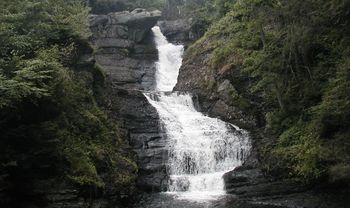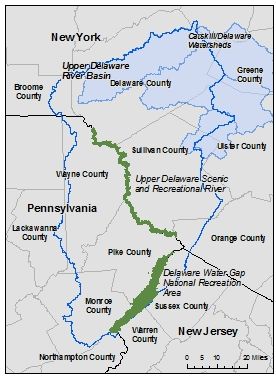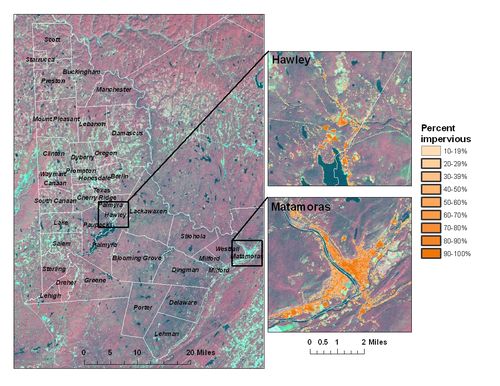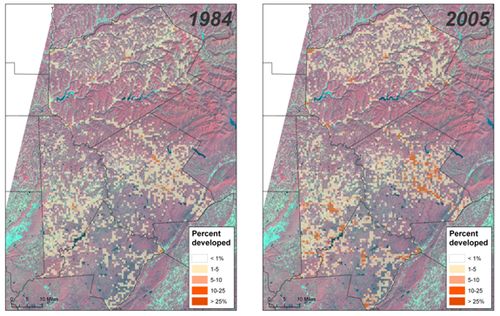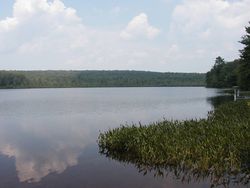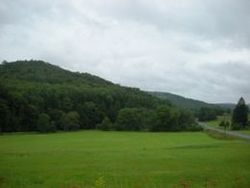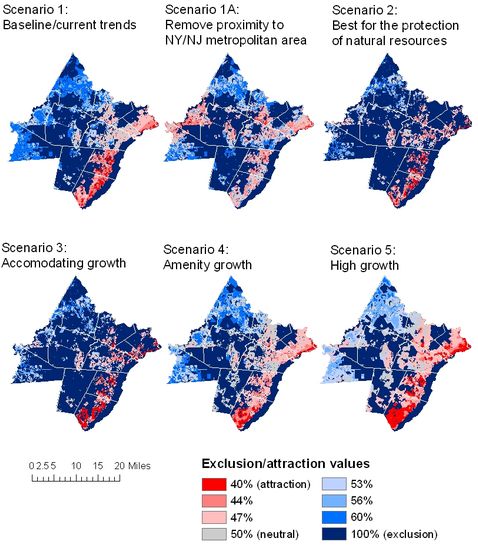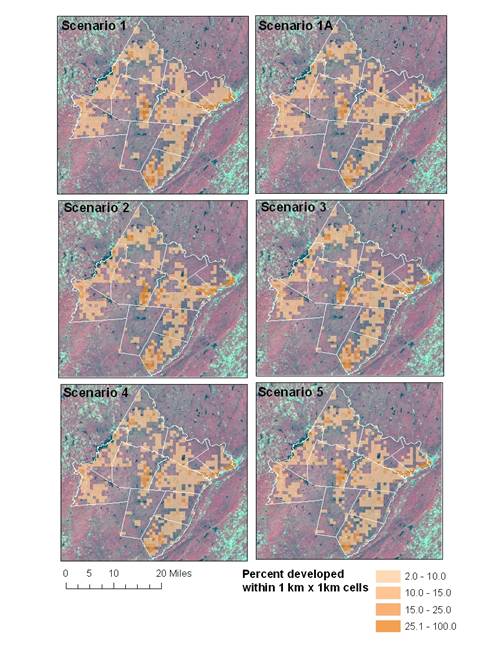|
|||||||||||
Forecasting Land Use Change in the Upper Delaware River BasinThe Upper Delaware River Basin lies at the intersection of New York, New Jersey and Pennsylvania. It has two National Park Service Units (Upper Delaware Scenic and Recreational River and the Delaware Water Gap NRA), which along with many state and privately owned recreational lands, has made this area an attractive destination for residents of the New York City metropolitan region. Four main counties in the Basin: Delaware and Sullivan in New York and Pike and Wayne in PA. The northern part of the Basin also encompasses the watersheds referred to as the Catskill/Delaware watersheds, which provide clean drinking water to half the population of New York State: eight million in New York City, one million in upstate counties, plus all the commuters and tourists in the region. The New York City’s Catskill/Delaware System is one of the largest unfiltered surface water supplies in the world.
Land Cover Change MappingEstablishing historic patterns of urbanization was the first phase of the project. Collaborator, Dr. Eric Brown de Colstoun, of SAIC and NASA Goddard Space Flight Center, developed impervious surface maps from Landsat 5 Thematic Mapper (TM) satellite images for 1984, 1995, and 2005. An example of the impervious surface data for 2005 is shown above. The image on the left shows the raw Landsat imagery (red indicates vegetation, cyan indicates impervious surfaces or bare soil, and black indicates water). The image on the right shows, in orange, the location and intensity of impervious surfaces that are derived from the Landsat image.
The extent and intensity of development in 1984 (left) and 2005 (right) for the four counties shown above.The orange indicates the location and intensity of development for 1 km x 1km pixels. The original data are at a finer resolution (30 m x 30 m pixels), but have been scaled up to a coarser resolution to show regional patterns.
An individual exclusion/attraction layer was developed for each of the four counties included in the original study, and calibrations and forecast scenarios to 2030 were run separately for each county. For example, Pike County, which borders both UPDE and DEWA and which has been one of the fastest growing counties in the state of Pennsylvania for over a decade, identified five alternative future scenarios.
Scenario maps for Pike County are shown above. Each map represents different assumptions about growth pressure and land use policies in the future. Red indicates areas of high growth pressure and blue indicates areas of low growth pressure.
Forecasted growth 2030 in Pike County for each of the county-defined six scenarios. Next StepsAs this project moves forward Shippensburg University and the National Park Service are working with a total of thirteen counties in New York, New Jersey, and Pennsylvania that intersect the Upper Delaware River Basin to establish a regional model. All of the counties are struggling to seek a balance between protecting land while still promoting economic development. The collaboration between the counties, the NPS, and researchers has proven invaluable to the region as a whole. As we move forward, facing new development challenges in the form of natural gas development, transmission corridors, and economic downturns, it is encouraging to work together to benefit the basin and the protection of the unique resources it provides. AcknowledgementsWe thank all of our project partners, especially the county planning staff in Pike, Wayne, Sullivan, and Delaware counties. This project was funded, in part, through grants from:
For More InformationJantz, C.A. and L. Morlock. Modeling Urban Land Use Change in the Upper Delaware River Basin. May 2011. 29 p. PDF 5.1MB Jantz, C.A., M. Mrozinski and E. Coar. Forecasting Land Use Change in Pike and Wayne Counties, Pennsylvania. April 2009. 45 p. PDF 2.98 MB Jantz, C.A. Simulating Urban Growth with the SLEUTH Model: A Training Manual. June 2009. 20 p. PDF 644 KB. Training data (.zip file, 8.3MB). Jantz, C.A. and S.J. Goetz (2007). Can Smart Growth Save the Chesapeake Bay? Journal of Green Building 2 (3): 41-51. PDF 3.78 MB Jantz, C.A., S.J. Goetz, P. Claggett, and D. Donato (2010). Modeling regional patterns of urbanization in the Chesapeake Bay Watershed. Computers, Environment and Urban Systems 34:1-16. PDF 3.39 MB |
|||||||||||
|
|||||||||||
